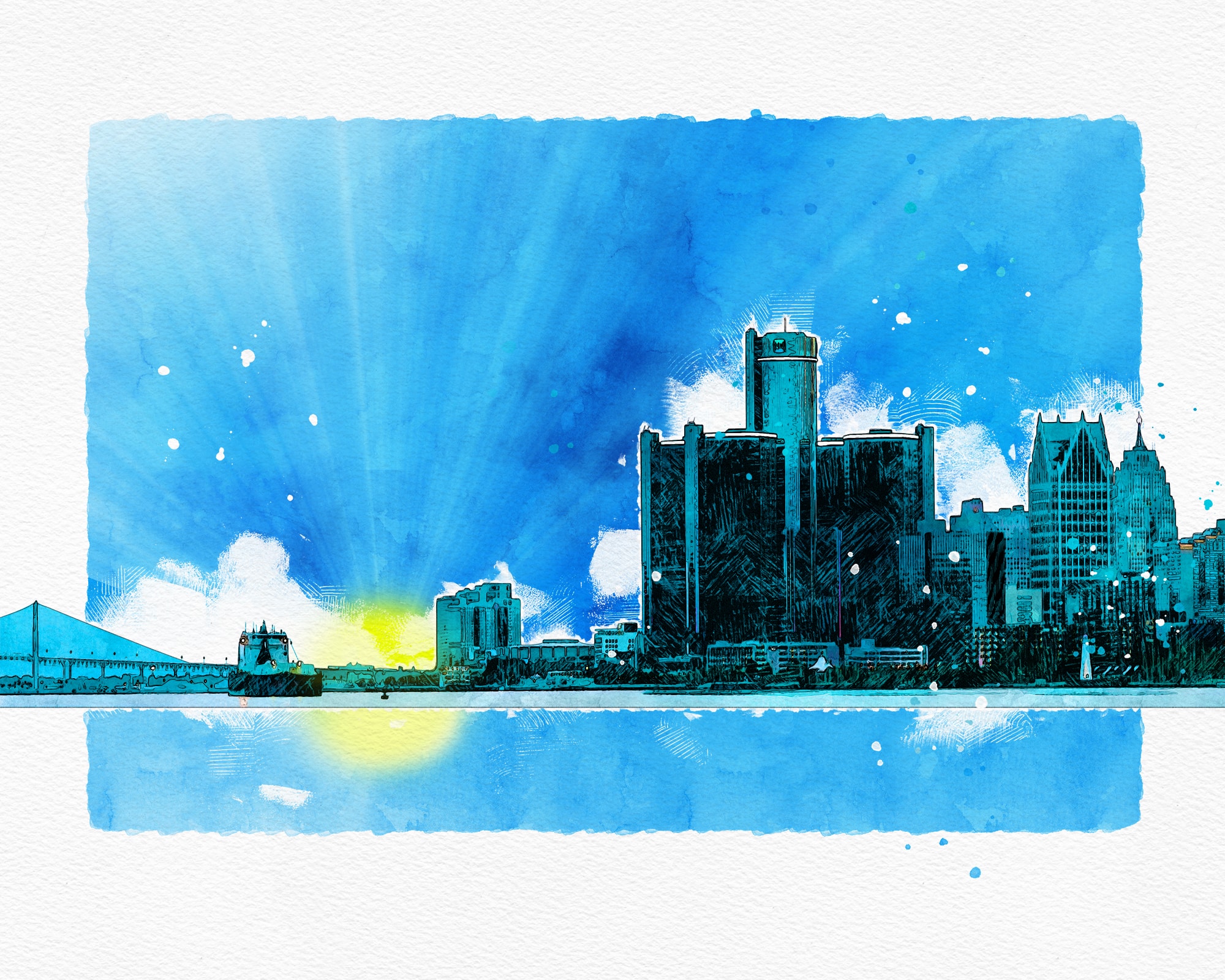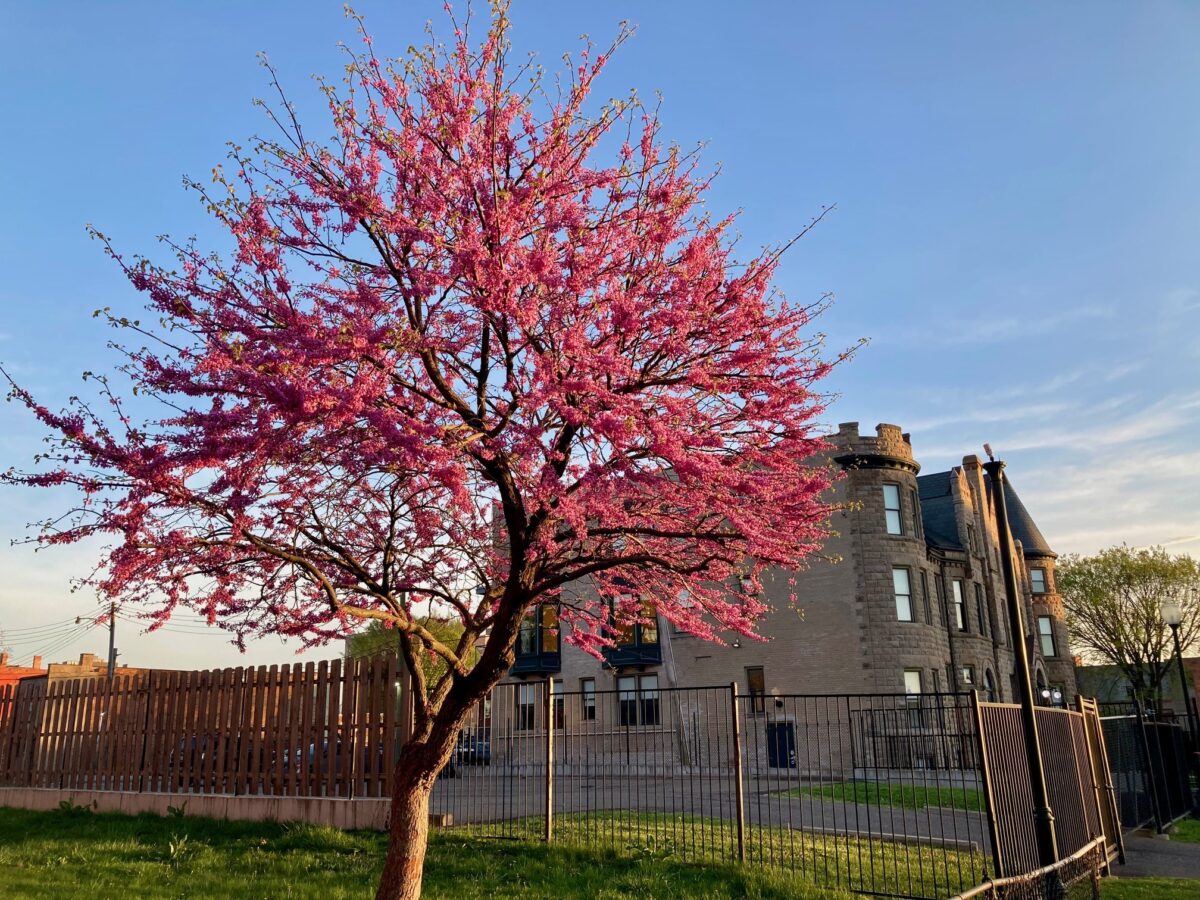Overview:
-Bodily changes during pregnancy, such as altered blood circulation, make pregnant people more susceptible to heat-related complications.
-In addition to extreme heat, climate change-related extreme weather events put pregnant people at risk from air pollution, flooding, infrastructure damage, and prenatal stress.
-Detroit's chief public health officer says the city has expanded the number and availability of cooling centers.
Table of Contents
- Why are pregnant people more vulnerable to extreme heat?
- How to cope in extreme heat
- What if I don’t have A/C at home or where I’m staying?
- Detroit cooling center locations during extreme heat days
- I have A/C, but I’m having trouble paying my utility bills. Where can I find help?
As we inch closer to the start of summer, climate researchers are encouraging people, particularly pregnant people, to protect themselves ahead of all but guaranteed multiday streaks of unusually hot temperatures.
Over the last five years, Michigan experienced an additional seven extreme heat days due to climate change, according to the nonprofit Climate Central, which recently published a global analysis of “pregnancy heat-risk days” between 2020 and 2024. In other parts of the U.S., such as the Southwest, the number of heat days has increased by roughly three weeks.
Even just one extreme heat day, the report goes on to say, can increase the risk of pregnancy complications, and threaten recent progress in reproductive and maternal health trends.
Climate disasters have the potential to damage critical infrastructure for pregnant people, Climate Central’s report said, giving the examples of homes, health care services, and hospitals where delivery and postnatal care take place.
During and after pregnancy, extreme weather events can affect mental health and add to other challenges such as housing, food, or financial security, the report said.
“Prenatal stress can affect maternal health and pregnancy outcomes,” according to Climate Central.
Why are pregnant people more vulnerable to extreme heat?
Pregnant people are more vulnerable to heat-related illnesses because of the bodily changes that occur during pregnancy, said Lyndsey Darrow, a professor of epidemiology at the University of Nevada Reno.
Those changes can include varying blood circulation patterns, a greater need for water and food, and challenges with body heat regulation.
Severe complications can occur, Darrow added, for both the pregnant person and the child, including high blood pressure, eclampsia (seizures in pregnant people with high blood pressure), and preterm birth.
In addition to extreme heat, climate change-related extreme weather events put pregnant people at risk from air pollution, flooding, infrastructure damage, and prenatal stress.
Elaine Batchlor, CEO of Martin Luther King Jr. Community Hospital, a safety net hospital in southern Los Angeles, told Planet Detroit: “Our body is only able to adapt to so much high heat.”
Urban areas, Batchlor added, are more likely to have fewer shaded areas due to limited green space, and an abundance of concrete and asphalt, which can absorb and store heat.
These factors contribute to the urban heat island effect, in which surface temperatures in cities are higher and more intense than rural areas.

How to cope in extreme heat
The city of Detroit has a list of tips available on its website for residents looking to protect themselves from extreme heat:
- Drink water. Even if you do not feel thirsty. Avoid alcohol and caffeine, which dehydrate the body.
- Stay indoors if possible. If your home does not have air conditioning, go to a public place that does, including city cooling centers. If outside, stay in the shade.
- Wear light-colored clothing. (Avoid wearing black clothes, especially if you’re in direct sunlight.) Loose fitting, lightweight, light-colored clothing reflects heat. Protect yourself from the sun by wearing a wide-brimmed hat and sunglasses.
- Never leave a person, especially child or older person — or a pet — in a closed, parked vehicle. The temperature inside a car can become 30 to 40 degrees hotter than the outside temperature.
- Slow down and avoid strenuous activity. If you must work outside, take frequent breaks.
- Visit at-risk people twice a day and watch them for signs of heat illness.
- Speak with your doctor about any medications you are taking to learn whether they may interfere with your body’s ability to regulate temperature.
- Do not use salt tablets unless directed to do so by a doctor.
Allegra Hill, a professional midwife and co-founder of Kindred Space LA, a freestanding birth center in South Los Angeles, says extreme heat or poor air quality days can heighten prenatal stress for her clients and limit the number of preventive health measures, such as swimming and other outdoor exercise, that are taken during their pregnancy.
The author of this article attended the Association of Health Care Journalism Conference in Los Angeles, where he spoke with Batchlor and Hill during a panel discussion on Black maternal health.
What if I don’t have A/C at home or where I’m staying?
Across Detroit, recreation centers, public libraries, and community centers have opened their doors to residents during city-declared heat emergencies.
Denise Fair Razo, chief public health officer at the Detroit Health Department, says city officials have expanded the number and availability of cooling centers in recent years, providing space for residents during the daytime and overnight to “cool off and escape the heat.”
Through collaboration between the Detroit Public Library, and the city’s Parks and Recreation and Housing and Revitalization departments, sites can open within an hour of an extreme weather alert, she told Planet Detroit.
“It’s been great because when we have emergencies, we don’t have time to run around trying to see if we can staff this recreation center or can we staff this library,” said Fair Razo. “We have to have something prepared that we can stand up very quickly.”
MORE REPORTING FROM PLANET DETROIT
What we’re reading: Detroit breaks 1899 heat record with 86-degree April day
Record-breaking heat swept across Michigan Tuesday, shattering century-old temperature records in cities like Detroit and Flint. Meanwhile, Lafayette Park residents are challenging a steam project they argue endangers their community. And the EPA’s cancellation of 781 environmental justice grants threatens vulnerable populations.
Can’t pay your energy or water bills in Detroit? These programs can help
Many assistance programs are up for renewal on Oct. 1, and recipients should act fast to avoid losing benefits.
To cut Black infant mortality, Henry Ford program supports Black moms
The odds are against Black babies who die at three times the rate of white babies in Michigan. This maternal care program aims to change that.
Detroit cooling center locations during extreme heat days
(Note: Listed hours and days may be extended depending on the length of the heat emergency.)
- Adams Butzel Complex, 10500 Lyndon; 8 a.m.-9 p.m. Monday through Friday, 10 a.m.-6 p.m. Saturday)
- Crowell Recreation Center, 16630 Lahser; (1-9 p.m. Monday through Friday)
- Farwell Recreation Center, 2711 E. Outer Drive; (11 a.m.-7 p.m. Monday through Friday)
- Heilmann Recreation Center, 19601 Crusade (8 a.m.-9 p.m. Monday through Friday and 10 a.m.-6 p.m. Saturday)
- Lasky Recreation Center, 13200 Fenelon; (noon-8 p.m. Monday through Friday)
- Kemeny Recreation Center, 2260 S. Fort; (8 a.m.-9 p.m. Monday through Friday and 10 a.m.-6 p.m. Saturday)
- Patton Recreation Center, 2301 Woodmere; (8 a.m.-8 p.m. Monday through Friday and 10 a.m.-6 p.m. Saturday)
Residents can also stay cool at any open Detroit Public Library locations during normal business hours.
Outside of city buildings, other community organizations such as Eastside Community Network and Brilliant Detroit have launched “resilience hubs,” community centers equipped with solar power, battery backups, and other resources to support residents during climate-related emergencies such as floods, power outages, and heat waves.
I have A/C, but I’m having trouble paying my utility bills. Where can I find help?
Detroiters can seek out financial assistance for rent, energy, and water bills through community action agencies such as United Way for Southeastern Michigan and Wayne Metro Community Action Agency, said Fair Razo.
Both organizations can help Metro Detroit residents in applying for the Michigan Energy Assistance Program.
(As of June 6, applications for Michigan Energy Assistance Program are temporarily closed due to high demand).
Detroiters with chronic health conditions and low incomes who are customers of DTE Energy and Consumers Energy can additionally apply for energy assistance through the Heat & Warmth Fund’s iHeal Program.
For more information, check out Planet Detroit’s guide on utility assistance.
Editor’s note: This story has been updated to correct Denise Fair Razo’s title: she is chief public health officer at the Detroit Health Department.





